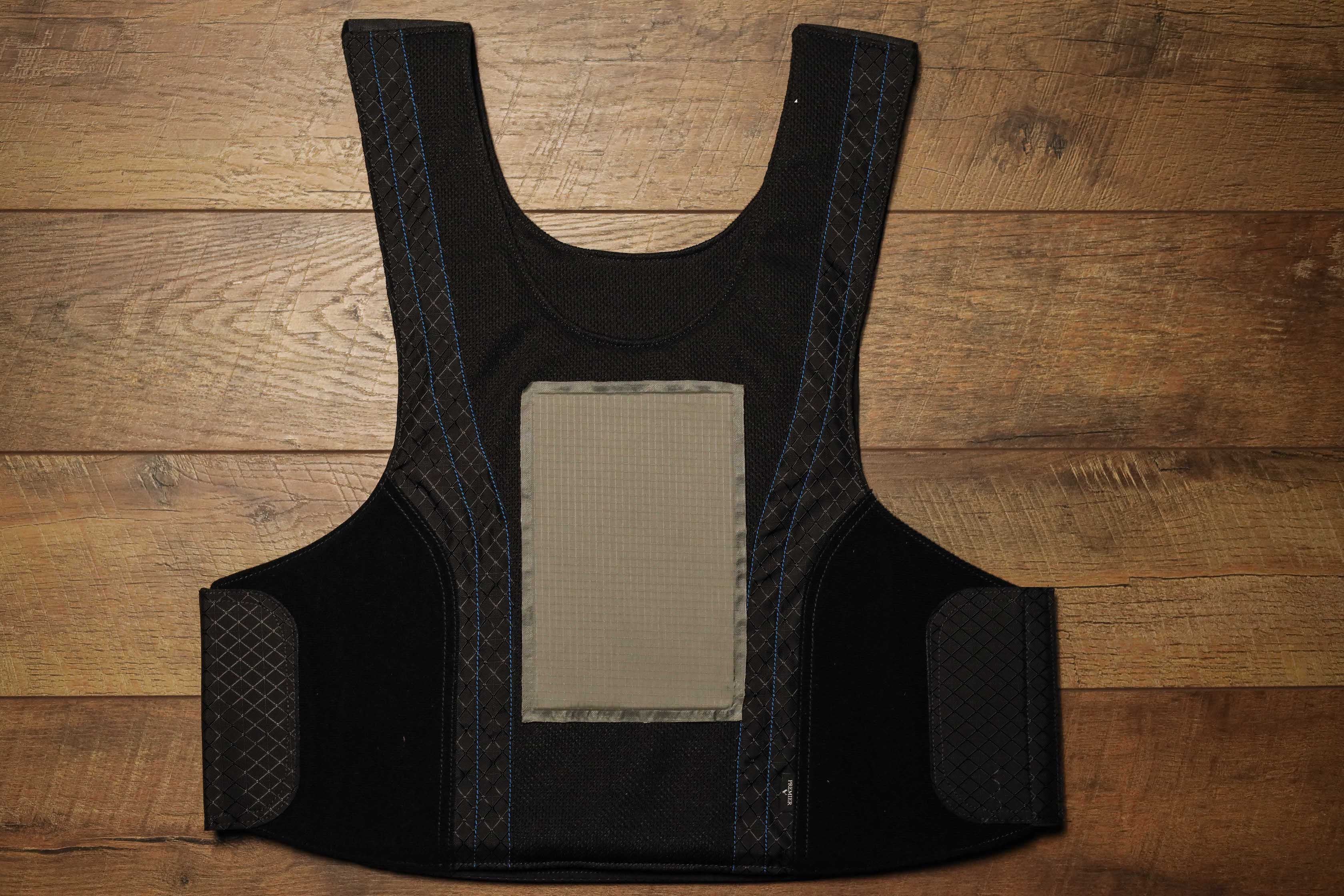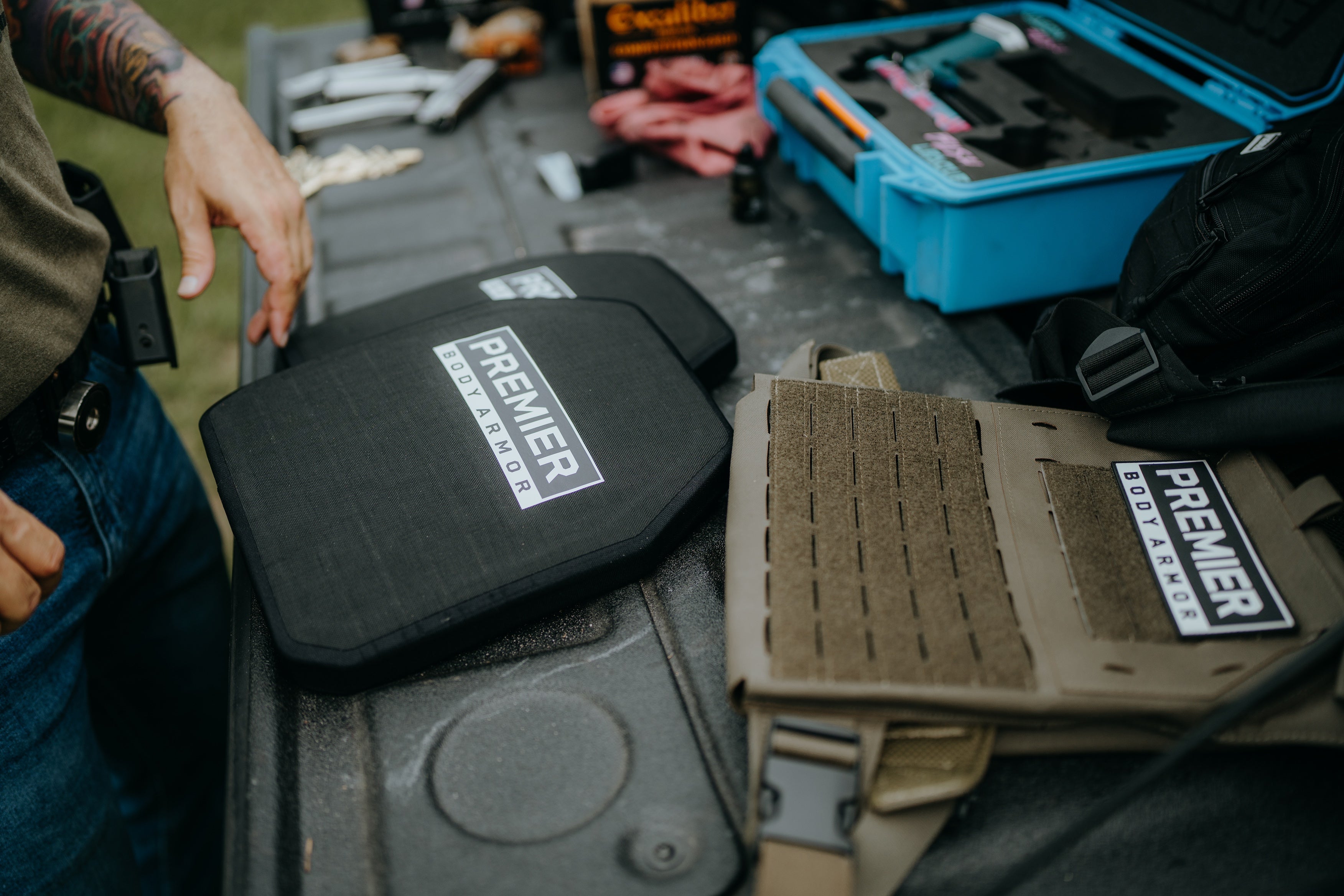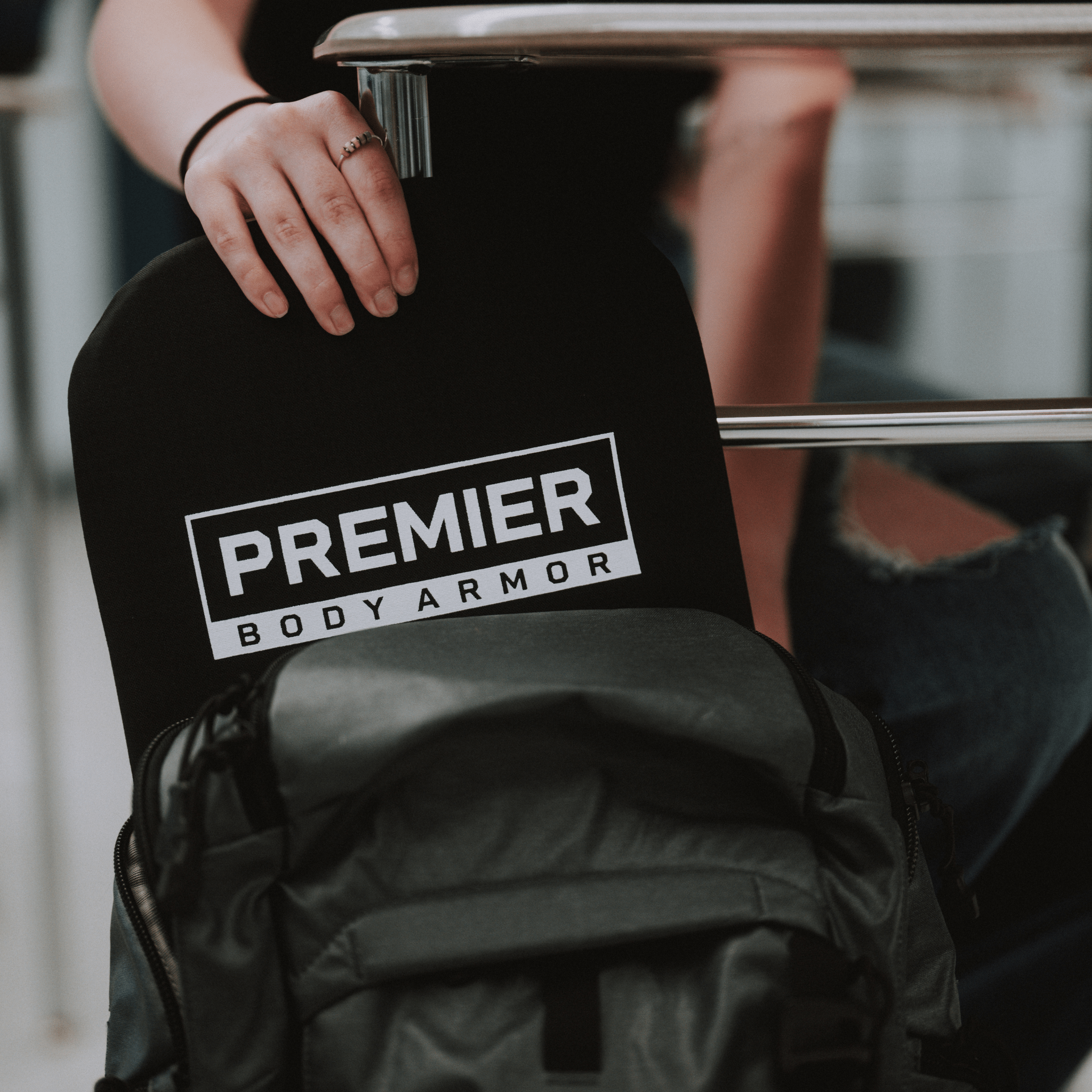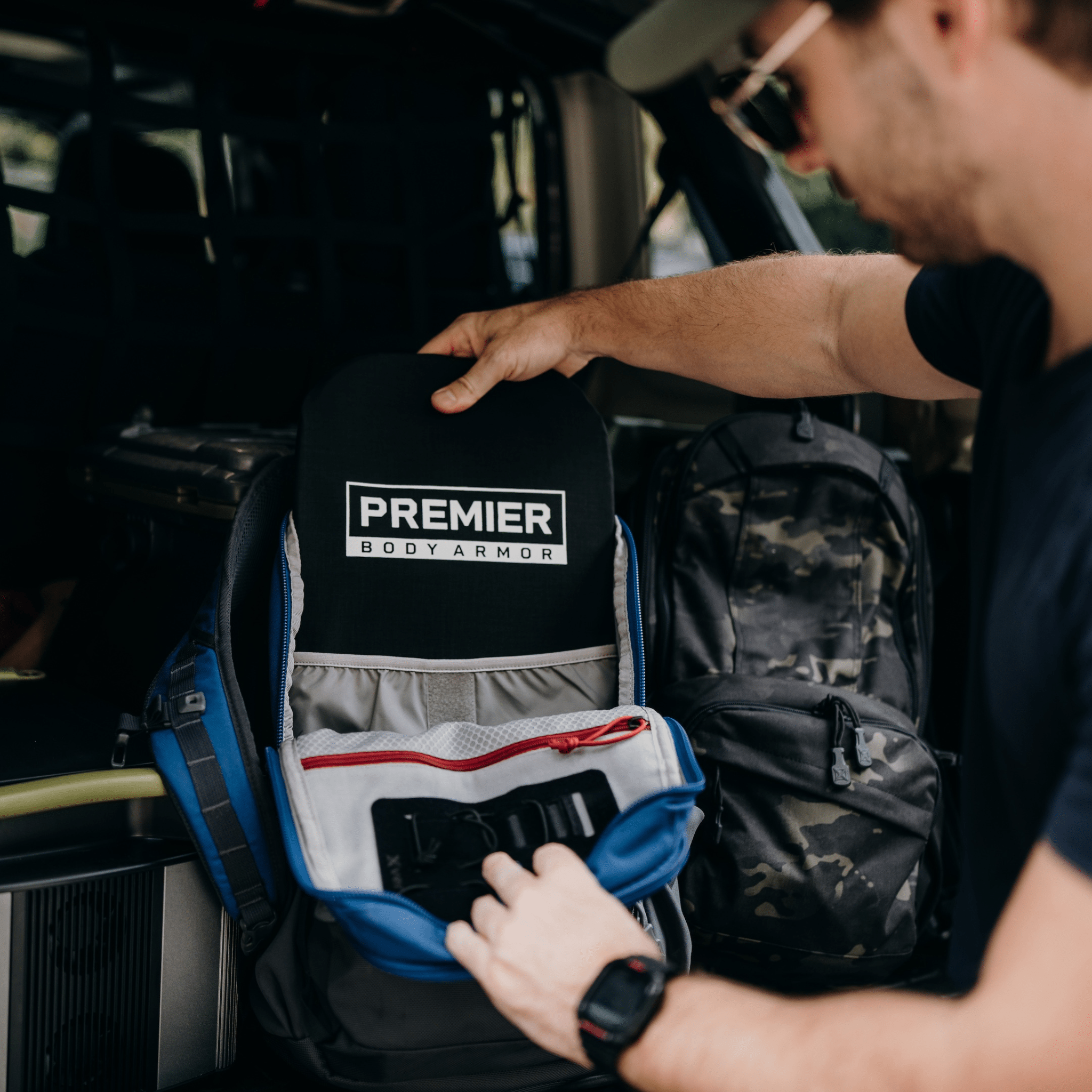Trauma Pads in Body Armor
Trauma Pad 101
Guest post by Andrew Schuler
Trauma pads are fairly standard when adding protection to your bulletproof vest or plate carrier, but what do they do? And are they necessary to keep your kit as lightweight as possible? In this article, we'll answer those questions and more in Premier Body Armor’s full rundown.
What is a trauma pad?
To start us off, a trauma pad is a type of protective gear that lessens the impact of blunt force trauma. It does this by transferring the bullet's kinetic energy away from your body. They are placed under your body armor in either the front, back, or side compartment of your carrier plate or bulletproof vest.

Material
Our trauma pads are made out of a special blend of para-aramid fibers. This material absorbs impact energy — this is crucial, as it protects the wearer from back-face deformation injuries.
It can also provide comfort when under no impact because its connected fibers make for soft foam padding. This is especially true when worn under a hard body armor system, like a plate carrier.
Shape and size
The typical shape of a trauma pad is a rectangle, as that’s proven to be the most effective in protecting the cardiac box. They also come in various sizes that serve different purposes:
- 5” x 7”
- 5” x 8”
- 6” x 8”
- 6” x 9”
- 9” x 9”
These sizes are good if you want to wear the trauma pad under a ballistic vest or plate carrier. Larger sizes include:
- 10” x 12”
- 11” x 14”
- 11” x 15”
Still, there is no one size fits all. It all comes down to personal preference when choosing the right trauma pad.
How effective are trauma pads?
Trauma pads are very effective in reducing injury from ballistic threats, but maybe not in the way you expected. A trauma pad is not bullet resistant, and they don’t provide extra ballistic protection — that’s what a bulletproof vest or armored plate is for; rather, they reduce the bullet’s energy to a degree your body armor couldn’t do by itself. They do this by distributing the energy to a larger area.
Trauma pads essentially do what a ballistic vest or plate carrier can’t. That is, softening the blow. To give you an idea:
The National Institute of Justice (NIJ) says that for body armor to pass an exam for a particular round in the United States, it must stop or capture the bullet; it must also have a backface deformation of less than 44mm (about 1.7 inches).
Still, think about a projectile traveling at 2,700 ft. per second upon impact, jutting 1.7 inches into your body. Sure, taking all things into account (like wearing the right body armor), you might survive, but you would still experience significant blunt-force trauma because of the bullet’s sheer force. That, however, is not the case when wearing trauma padding because it absorbs impact energy.
So, with all that said, wearing body armor and trauma pads work best in tandem. For you to have the safest kit all around, it's wise to pair them together.

Are trauma pads practical?
In short – yes. Wearing trauma padding is practical, convenient, and, overall, highly advisable, as it reduces blunt force and back-face deformation under any form of body armor.
Plus, when looking for alternatives to trauma padding, you are really only left with one option: wearing a bulletproof vest with thicker padding, which we don't recommend. We recommend inserting a trauma pad under your body armor because merely wearing a vest with extra padding makes for added bulk and cost.
When looking for the best armor getup, you want discretion, concealability, light weight, exceptional protection, and the best material. The most effective way to achieve all these things is by including a ballistic trauma pad in your body armor system.
End of the line
At Premier Body Armor, all our bulletproof vests automatically come with trauma pads, and all our plate carriers are designed with a trauma pad pocket included, giving you the option to have a full kit with ease. Our spall liners can double as a trauma pad as well.
Trauma pads are useful. We recommended them, as investing in an additional line of defense is always smart. Remember, there’s more to a gunshot than a piercing wound. The force of the bullet is to be reckoned with – but not as much with a trauma pad.










How do I order a 5” x 8”? Are they available?
Leave a comment